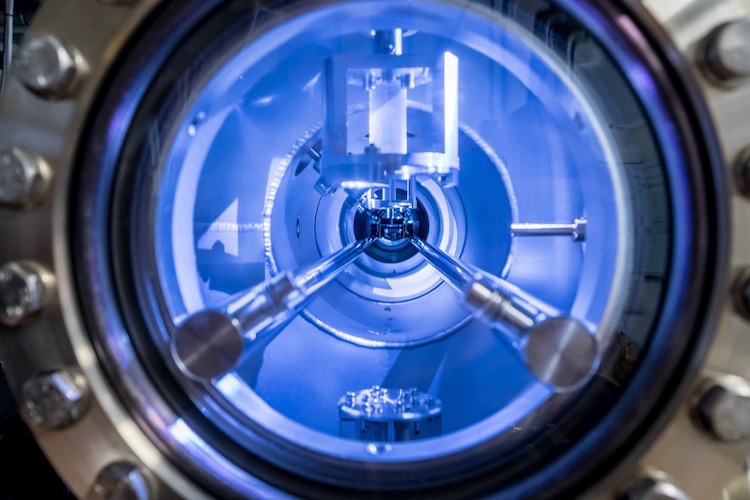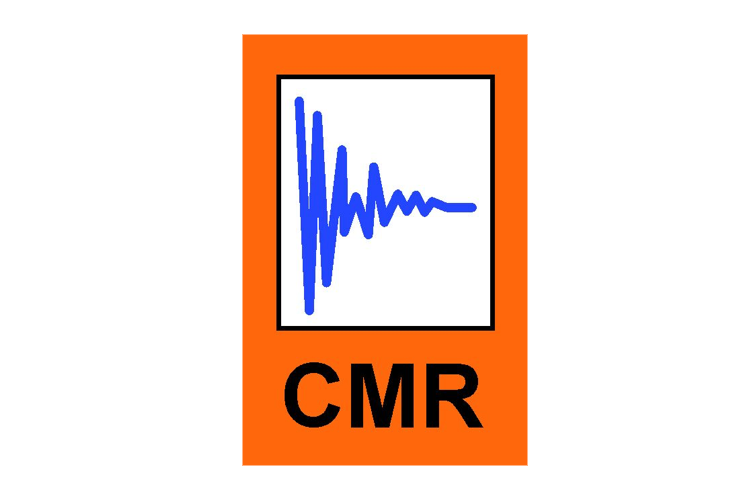Research centres and institutes
Building on the School's priority areas of astrophysics, condensed matter and photonics, its research activities have nucleated around several interdisciplinary research centres. These centres support collaborative research and impact with researchers working in other disciplines, both in St Andrews and beyond. The research centres are:
- The Centre for Exoplanet Science
- The Centre for Designer Quantum Materials
- The Organic Semiconductor Centre
- The Centre of Magnetic Resonance
- The Centre of Biophotonics
- Institute for Data-Intensive Research
- Sir James Mackenzie Institute for Early Diagnosis
The School also participates in several collaborative centres for doctoral training, delivering high-quality graduate-level training to PhD and EngD students.
Centre for Exoplanet Science
The Centre for Exoplanet Science brings together researchers from different disciplines to find out how planets form in different galactic environments, how their atmospheres evolve, and the relation between the evolutionary history of planets and the emergence of life. The centre is further interested in the moral, ethical and technical aspects of detecting existent or extinct extra-terrestrial life in distant exosystems, or within our own solar system, and the significance of such a discovery for our societies.
The Centre for Exoplanet Science combines research from the Schools of Physics and Astronomy, Earth and Environmental Sciences, Biology, and Modern Languages, and the Departments of Philosophy and Social Anthropology.

Centre for Designer Quantum Materials
The Centre for Designer Quantum Materials (CDQM) is a unique research centre in the UK, focused on understanding and engineering the properties of quantum materials.
Quantum materials exhibit a wide range of stunning, and potentially extremely useful, physical properties. From high-temperature superconductivity to exotic topologically ordered states, understanding the physics underpinning quantum materials is a frontier research challenge of modern condensed matter and materials physics, while learning to control their quantum many-body states and phases could ultimately deliver a step change in functionality for new technologies.
The centre combines atomic-scale materials synthesis with state-of-the-art spectroscopic and thermodynamic probes and theoretical modelling to take a targeted approach to understanding and designing new quantum electronic states in solids.

© Tricia Malley Ross Gillespie www.broaddaylightltd.co.uk
Organic Semiconductor Centre
The Organic Semiconductor Centre (OSC) is an interdisciplinary research centre which brings together physicists and chemists to undertake collaborative research on remarkable plastic-like materials that can conduct electricity and emit light. Organic materials are an important new class of semiconductors which are now widely found in OLED displays in smartphones and televisions. These materials combine the virtues of plastics, which can be easily shaped, with those of semiconductors which are the basis of all microelectronics.
The OSC provides world-class facilities for researchers in physics and chemistry to develop the next generation of organic semiconductors and industrially relevant applications spanning sensors, energy, data communications, biotechnology and medicine.
![]()
Centre for Magnetic Resonance
The Centre of Magnetic Resonance (CMR) joins research groups from the Schools of Physics, Chemistry and Biology in St Andrews and research groups in Dundee, all working in the fields of liquid or solid-state nuclear magnetic resonance (NMR), dynamic nuclear polarization (DNP), electron paramagnetic resonance (EPR), muon spin rotation or computational magnetic resonance.
The aim of the CMR is to provide a platform for exchanging ideas to stimulate discussion and to strengthen cooperations, research, and grant applications.

Centre of Biophotonics
The Centre of Biophotonics (CoB) at the University of St Andrews was established in December 2019 with the mission of promoting interdisciplinary research and training at the interface between advanced optical imaging, photonics and biomedical sciences. The centre spans across multiple schools (Physics and Astronomy, Biology, Medicine, and Psychology and Neuroscience) and builds on existing strengths in the development and application of light-based technologies to investigate biological processes at molecular, cellular and tissue level.
The CoB brings together more than 25 research groups working around three main themes: 3D optical imaging across temporal and spatial scales, mechanobiology and neurophotonics. The CoB is also strongly committed to translational research and the dissemination of technologies emerging from the centre in collaboration with other institutions and industrial partners.

Institute for Data-Intensive Research
The St Andrews Institute for Data-Intensive Research (IDIR) was established to provide a focus for research and teaching activities across the University driven by access to 'big data'.
IDIR supports collaborative data-driven research from data science, through digital humanities and digital social science, to digital medicine. It brings together researchers from nine Schools across the University, fostering interactions between solution providers with expertise in different data-driven techniques and problem providers with data-driven challenges.

Sir James Mackenzie Institute for Early Diagnosis
Established in 2019, the Sir James Mackenzie Institute for Early Diagnosis is an interdisciplinary research collaboration committed to fostering ideas and sharing knowledge and skills around earlier diagnosis of human disease.
The organisational structure of the Mackenzie Institute draws from existing expertise in early diagnosis that is distributed across Medicine, Biology, Chemistry, Computer Science, Geography and Sustainable Development, Mathematics and Statistics, and Physics and Astronomy.
The Institute has three research platforms: biophotonics in early diagnosis, digital diagnostics and emerging technologies, and health data research.

Centres for doctoral training
Centre for Doctoral Training in Quantum Materials
The Centre for Doctoral Training in Quantum Materials (QM-CDT) brings together physicists and materials chemists to provide broad interdisciplinary training in the underpinning science of quantum materials. As well as specialist lecture courses and transferrable skills training, all students in the centre undertake a major piece of doctoral research and have access to some of the best facilities in the world for studying quantum materials, including the University's Centre for Designer Quantum Materials and Centre for Magnetic Resonance, and extensive capabilities for materials synthesis, processing, and characterisation.
International Max Planck Research School for Chemistry and Physics of Quantum Materials (IMPRS-CPQM)
The IMPRS-CPQM is a tri-institutional collaboration of the Max Planck Institute for Chemical Physics of Solids in Dresden, Technische Universität Dresden, and the University of St Andrews. It provides a highly attractive overall package of PhD-level research on materials chemistry and physics including access to world-leading facilities, a large range of graduate-level courses across both disciplines, and specially designed skills training (both academic and non-academic). IMPRS-CPQM's aim is to recruit PhD students from all over the world and offer them an internationally leading PhD programme.
Centre for Doctoral Training in Applied Photonics
The Centre for Doctoral Training in Applied Photonics (CDTAP) is a collaboration of six universities across Scotland. It offers a four-year postgraduate training programme combining industry-focused research with technical and professional skills courses. All research projects involve an industrial partner working in the field of photonic imaging, sensing or analysis. Students either undertake a PhD or Engineering Doctorate (EngD) degree, with the latter fully embedded in the company. For both degree options, the four-year programme combines PhD-level research projects with Masters-level technical and MBA courses. Students spend 75% of their time working directly with the company and 25% on courses.
Scottish Doctoral Training Centre in Condensed Matter Physics (CM-CDT)
The EPSRC Centre for Doctoral Training in Condensed Matter Physics is a tri-institutional doctoral training centre between the universities of St Andrews, Edinburgh and Heriot-Watt. Running since 2009, the CDT provides students with:
- a rigorous, broad graduate education across the spectrum of condensed matter physics
- training in skills that equip them for the workplace, be it industrial or academic
- a vibrant, diverse research environment for their PhD projects.
Students perform a PhD research project, take graduate-level courses, participate in summer schools, conferences and workshops, and receive skills training relevant to their future careers. The centre aspires to produce rounded graduates equipped to succeed in research, academia, and a wide range of industries and businesses.